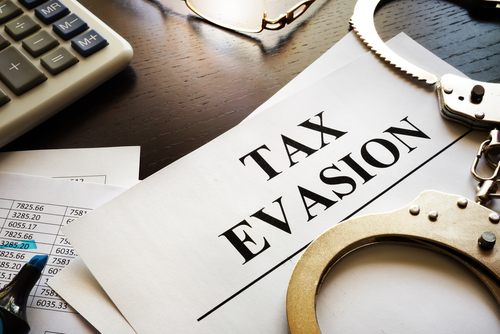The U.S. Department of the Treasury issued a report last week designed to increase fairness in the tax system and address tax evasion.

The measures are part of proposals made by President Joe Biden in the American Families Plan. This report describes Biden’s tax compliance initiatives that seek to close the tax gap – that is, the difference between taxes owed to the government and actually paid. According to the Treasury, the tax gap totaled nearly $600 billion in 2019 and will rise to about $7 trillion over the course of the next decade if left unaddressed—roughly equal to 15 percent of taxes. While roughly 99 percent of taxes on wages are paid, compliance on less visible sources of income is estimated to be just 45 percent.
These unpaid taxes come at a cost to compliant taxpayers as policymakers choose rising deficits, lower spending on necessary priorities, or further tax increases to compensate for the lost revenue. Closing the tax gap has the potential to raise substantial revenue. However, these reforms also improve tax progressivity and economic efficiency.
The compliance proposals in the American Families Plan would provide the IRS with the resources it needs to address sophisticated tax evasion. It calls for a multi-year commitment to rebuilding the IRS, including nearly $80 billion in additional resources over the next decade. This would be for initiatives like modernizing information technology, improving data analytic approaches, and hiring and training agents dedicated to complex enforcement activities.
Over the past decade, the IRS budget fell by about 20 percent, leading to a sustained decline in its workforce, particularly among auditors who conduct examinations of high-income and global high net worth individuals and complex structures, like partnerships, multi-tier pass-through entities, and multinational corporations.
The proposal would also provide the IRS with more complete information. When the IRS can verify taxpayer filings with third-party information reports, such as the W-2 forms submitted by employers to report wages, compliance rates exceed 95 percent. Without third-party reporting, compliance rates fall below 50 percent. This leads to an inequitable asymmetry in tax collections depending on the form in which income is accrued. The Government Accountability Office (GAO) and IRS agree that strengthening third-party reporting is one of the best ways to improve tax compliance.
In addition, the plan would overhaul outdated technology to help the IRS identify tax evasion and better serve customers. Further, it would regulate paid tax preparers and increase penalties for those who commit or abet evasion.
Officials at the Treasury Office of Tax Analysis said these initiatives would raise $700 billion in additional tax revenue over the next decade.